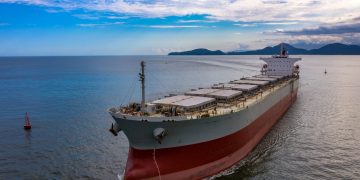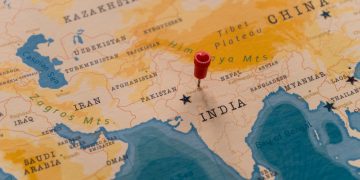EMSA issued information for state authorities, ship owners, masters, fuel suppliers, agents or operators of ships on Directive 1999/32/EC.
Operators should ensure that appropriate procedures are established on board and that the crew is familiar with them. Attention should be paid to the correct completion of ship logbooks, including the time when fuel changeover operations are performed. Ships using separate fuel oils to comply with the sulphur requirements, should carry a written procedure showing how the fuel oil changeover is to be achieved while entering or leaving the SECA. The procedure should allow sufficient time for the fuel oil service system to be fully flushed of all fuel oils exceeding the new applicable sulphur content, prior to entry into a SECA, in order to avoid any contamination.
In addition, the volume of low sulphur fuel oils in each tank, as well as the date, time, and position of the ship when any fuel oil changeover operation has been completed prior to the entry into the SECA or commenced after exit from such an area, should be recorded in the logbook.
Also, ships provided with an Oil Record Book Part I (Machinery Space Operations) must pay attention to the recording of bunkering of fuel operations.
|
Further information on Directive 1999/32/EC as amended can be found on the following websites: |
Penalties
Penalties may be imposed by EU Member States for breaches of the national provisions adopted pursuant to Directive 1999/32/EC as amended.
Sulphur content of marine fuels
From 1 January 2015, new sulphur content limits apply to the marine fuels used by ships operating within the North European Emission Control Areas for Sulphur (SECAs). Other limitations already apply to the marine fuels used by ships operating outside the SECA or while at berth at an EU port. Compliance with these requirements will be verified by the competent authorities of the EU Member States (the ‘sulphur inspectors’).
New sulphur limits
 From 1 January 2015 and until 1 January 2020, the new maximum sulphur limits by mass are:
From 1 January 2015 and until 1 January 2020, the new maximum sulphur limits by mass are:
Sulphur Emission Control Area
The current EU SECAs are the Baltic Sea and North Sea as respectively defined in regulation 1.11.2 of Annex I and regulation 1.14.6 of Annex V of MARPOL Convention.
How will it be enforced?
EU competent authorities are responsible for the enforcement of these requirements on all vessels flying their flag and all vessels of all flags while in their ports. In particular, the authorities will carry out inspections, sampling and analysis of the marine fuels used on board.
Inspections will involve documentary verifications, and, as appropriate:
- sampling of the marine fuel for on-board combustion while being delivered to ships, or
- sampling and analysis of the sulphur content of marine fuel for on-board combustion contained in tanks, where technically and economically feasible, and in sealed bunker samples on board ships.
Abatement methods
As an alternative to using compliant marine fuels, ships may use emission abatement methods:
- Exhaust Gas Cleaning Systems (EGCS) should comply with the relevant IMO guidelines.
- Boil Off Gas (BOG) should comply with Commission Decision 2010/769/EU of 13 December 2010, as extended in the SECAs.
- Biofuels as defined in Directive 2009/28/EC should comply with the relevant CEN and ISO standards.
- Approved Emission Abatement Methods must be capable of continuously achieving reductions of sulphur emissions (SOx) equivalent to those using compliant fuels and have to be approved prior to their use.
Documentation on board
As means of sampling, analysis and inspection, the EU competent authorities will, as a minimum, verify the on-board bunker delivery notes, and, as appropriate:
- ships’ logbooks, or
- abatement method documents, if appropriate.
In addition, other on-board documentation may be considered by the sulphur inspectors to ascertain compliance. Also, ships found not to be in compliance with the required standards for marine fuels, might be requested to provide additional evidence including:
- actions taken to achieve compliance, and
- attempts to purchase compliant marine fuel.
THETIS-S information system
The THETIS-S system has been developed by EMSA as the EU’s information system for recording and sharing the findings of enforcement actions to verify compliance with Directive 1999/32/EC, as amended. The system is accessible to the competent authorities of the Member States of the European Union, Norway and Iceland
You can read the trifold entitled “New Limits for teh Sulphur Content of Marine Fuels” by clicking below:
Source: EMSA
In the starting, I was explicit with you propecia before and after has changed my being. It has become much more fun, and now I have to run. Just as it is fabulous to sit.

































































